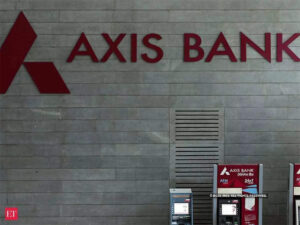Net interest income of banks grew by a record 25.5% to Rs 1.78 lakh crore in the December 2022 quarter on-year, driven by a healthy credit off-take and higher yield on advances, according to an analysis. The quarter saw banks booking higher yields on advances as the system-wide core profitability metric net interest margin rose by 17 basis points to 3.28%.
This was possible as banks repriced existing loans higher at a faster rate and also increased the new loan pricing, but kept deposit rates almost unchanged, according to an analysis by Care Ratings’ senior director Sanjay Agarwal. But the rise in NIM was led by private sector banks, thanks to their operational efficiencies, at 4.03%, up 15 bps on-year. State-owned banks registered NIM at 2.85%, up 17 bps on-year.
Net interest income, or NII, is the main revenue head for banks and is the difference between interest earned on advances and the interest paid to depositors/funds raised from markets. NIM is the profit margin/ profitability gauge earned from advances and other credit businesses as a percentage of cost. Agarwal expects the NIM to stabilise going forward due to repricing of liabilities-of late major banks have begun to offer higher returns to depositors as credit demand continues to remain in high double-digits while deposits are hardly coming in.
The Reserve Bank of India has increased the key fund rate-repo rate-by 60 bps in the December quarter-35 bps in the October policy review and 25 in December-and banks have quickly passed on the fund cost differences to borrowers. Cumulatively, the cost of funds have gone up by 250 bps since May 2022 as inflation remained above the RBI’s tolerance level of 6% throughout the year.
Even on a sequential basis, NIM has improved from 3.11% for the system-from 2.67% in case of state-owned banks and from 3.88 per cent in case of private banks. These figures stood at 2.96%, 2.51% and 3.79%, respectively in the 12 trailing months. NIMs were the highest since FY21, he said. Banks reported a robust 18.5% rise in advances in Q3.
This was led by public sector banks which reported net advances growth of 18.9% in the quarter while private sector peers lagged a bit at 17.9%. But on the NII front, private banks fared a tad better at 26.7% while state-run banks booked 24.6% on an annualised basis, according to the report.
Overall interest expenses rose 24.2%, with private banks witnessing a rise of 27.3% and public sector ones 22.6%, said the report, based on the quarterly numbers of 12 state-owned banks and 18 private lenders. Weighted average lending rates of fresh loans increased by 120 bps to 8.9% between December 2021 and December 2022. The same on outstanding loans increased by 66 bps to 9.52%. On the other hand, the weighted average domestic term deposit rates grew by 74 bps during this period.
Agarwal expects deposit rates to rise due to a lag effect driven by the rise in policy rates, an increase in competition for raising deposits to meet strong credit demand and a wide gap between credit and deposit growth. Banks which have been able to maintain a higher low cost CASA as well as EBLR-based floating loans are expected to benefit and sustain the NIM in the current rising interest rate scenario. Overall, NIMs are expected to stabilise as lending rates will likely complete their rising cycle while liabilities would continue to be repriced, he added.











